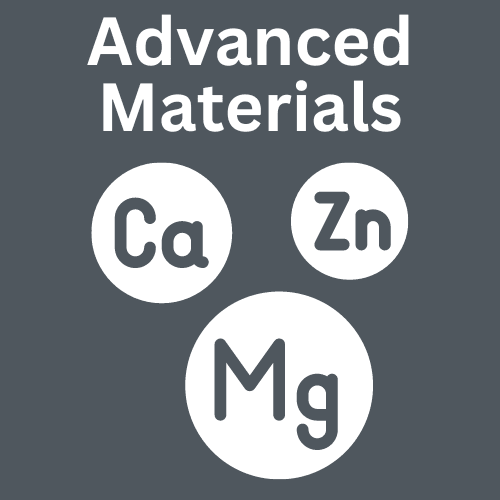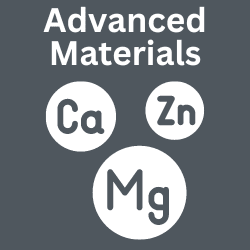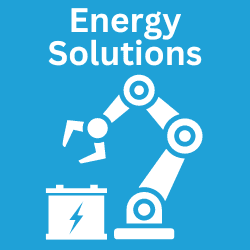Features & Benefits of Trajectory Mixing:
A New Dimension in Mechanical Process Engineering
Information for Specialists
Mechanical process engineering continually faces the challenge of making mixing, kneading, and conditioning processes more efficient, gentler, and flexible. Traditional agitators and mixers—despite decades of optimization—have inherent limitations, especially when dealing with demanding media and the desire for batch-of-one capability at industrial scale.
hs-tumbler GmbH presents a disruptive technology with the Trajectory Mixer, which has the potential to fundamentally change established mixing methods. This document provides you, as a specialist, with a technical insight into the principle, functionality, and compelling advantages of this innovative technology.
Principle of Trajectory Mixing
At the core of the hs-tumbler Trajectory Mixer lies a fundamentally new mixing principle: instead of processing the material with rotating tools, the process vessel itself moves along precisely defined, programmable motion paths.
- Motion Mechanism: The vessel is moved by highly dynamic actuators simultaneously in at least two orthogonal directions. Complex two- or even three-dimensional motion patterns—often visualized as Lissajous figures—are generated by mechanically superimposing multiple harmonic sine oscillations driven by servo-controlled eccentrics. These eccentrics "roll" to produce exact sine waves. This design ensures smooth sine movements without abrupt direction changes, even when the combined paths include partly linear segments. This contributes significantly to the machine’s quiet and low-stress operation.
Energy Input: The rapid movement of the process vessel and the resulting accelerations (up to 25 times gravitational acceleration) generate high forces acting directly on the material. The vessel must move fast enough that the product interacts with its walls. Once the eccentrics reach a certain speed, the acceleration forces become strong enough to lift the product away from one wall and deposit it against the opposite wall. This lifting and angled redeposition mechanism transfers energy into the product and produces the shear forces required for mixing—from gentle to vigorous. Since these forces always act at an angle rather than as a direct impact, the process remains gentle on the material.
Effect on the Product: The material’s inertia and the vessel’s motion cause the product to process itself and interact with the vessel walls. The energy input intentionally generates shear and tensile forces throughout the entire volume of the material. Those forces are essential for mixing and can be adjusted from gentle to intense, allowing both gentle handling and vigorous processing.
100% Engagement: A key difference from agitators is that, with trajectory mixing, theoretically 100% of the batch mass is set in motion and processed simultaneously. There are no “dead zones” or areas with reduced mixing.
Tool-Free Technology: Since no tools enter the product, drawbacks of traditional agitators—such as product damage, heat generation from friction, or the risk of contamination and buildup on the tools—are eliminated.
This principle differs fundamentally from rotating tumblers (which slowly spin around an axis) and other alternative mixers.
Technical Features and Convincing Advantages for Process Engineering
The hs-tumbler Trajectory Mixer offers a range of advantages highly relevant for process engineering practice and addresses concerns about adopting new technologies:
- Process Intensification (Speed): Mixing times are drastically reduced—often from hours to seconds or minutes. This enables significantly higher throughput on a smaller footprint and seamless integration into faster process chains.
Energy Efficiency: Direct, targeted energy input into the entire product volume leads to considerable energy savings compared to systems that must move large masses or transfer energy through inefficient intermediaries. Savings of over 50%, and up to 98% in highly viscous applications, are possible. This contributes significantly to reducing the CO₂ footprint and makes the equipment eligible for BAFA funding. The energy required per kilogram of processed material remains constant or even decreases with larger batches, since the proportion of moving machine parts declines.
Gentle Processing: The absence of mixing tools and controlled introduction of shear forces minimize mechanical and thermal stress on the product. This is crucial for sensitive materials, emulsions, suspensions, or doughs, where structure or temperature is critical. Agglomerate-free mixing can be achieved. Stepless control of the drives and manipulation of shear forces through phase and adhesion forces allow both very sensitive and powerful processing—from making egg salad without destroying egg slices to kneading pasta dough.
High Flexibility:
Product Variety: The system can process media across an extremely wide viscosity range.
Adaptation to Material Behavior: Programmable motion paths (frequency, phase, amplitude, acceleration) can be dynamically adjusted to the material’s changing properties during mixing. This enables replication of various mixing tools (e.g., dough hook, whisk).
Batch-of-One Capability: Using small, interchangeable process vessels allows economical processing of very small quantities—even a single unit—at industrial scale.
Easy and Reliable Scalability: A major advantage is scalability. The principle applies from laboratory units (e.g., K1 for up to 4.5 kg), pilot systems for small series (J4 with four 17 L vessels), to industrial high-throughput systems (J4 up to 7.2 t/h). Unlike agitator-based systems, which require complex adjustments to geometry, energy input, and process parameters during scale-up, the Trajectory Mixer maintains characteristic motion paths and acceleration forces across all scales. This ensures that product handling remains consistent, and mixing results—from lab to industrial scale—are predictable, greatly reducing process development and optimization effort during scale-up. Build costs, thanks to the mechanically simpler design of superimposed sine oscillations and standardized components, are no higher than other systems with similar performance.
Enabling (Near) Continuous Processes: Quick batch changes can simulate continuous material flow, offering logistic advantages.
Hygiene and Cleaning: The closed system and easy vessel exchange minimize cleaning effort and contamination risks.
Heat Transfer: Excellent contact between the product and vessel walls—thanks to acceleration forces—promotes efficient heat transfer in both directions (heating and cooling).
AI Integration: The ability to dynamically optimize process parameters using AI based on process data (e.g., acoustic signals) promises further efficiency and reproducibility gains. AI helps produce the optimal processing result every time without discarding batches.
Reduced Complexity and Maintenance: Mechanically adding sine oscillations via eccentric discs and servo motors is technically simple. The mechanical structure that superimposes vibrations and supports the process vessel is straightforward and compact. Spare and wear parts are mostly off-the-shelf components from well-known industrial suppliers, making maintenance easy and cost-effective. Machined special parts are not classified as wear items. With proper maintenance, a lifespan of at least 10 years is expected.
Easy Process Optimization and Operation: Although the technology is novel, there is a set of standard patterns suited for different product groups and viscosities. This knowledge is conveyed in brief in-house training (approx. 30 minutes). Usually, only a few trials (3–6) are needed to find an optimal processing window. Customers quickly develop an intuitive feel for parameter settings. Operation is straightforward for machine operators, as recipes can be loaded that contain the necessary motion path information. Fine-tuning is particularly easy, effective, and immediately visible with the next micro-batch, since processing occurs in micro-batches. Only new product developers require initial training.
Addressed Challenges: Initial concerns about the durability of linear guide systems under specific operating conditions (small amplitude, high frequency) and the protection of open guide surfaces were successfully resolved through extensive testing, confirming industrial applicability. Vibration damping poses no challenge, as resonance frequencies that could disrupt the system do not occur. Minor abrasion from abrasive materials can be minimized by applying abrasion-resistant coatings to the vessels, aided by lower bearing forces compared to agitator tools.
Limitations of Traditional Mixing Methods (Agitators)
Conventional mixing methods using rotating agitators have long been established but exhibit inherent disadvantages, underscoring the need for innovative solutions like trajectory mixing:
- Dead Zones & Insufficient Mixing: Especially in large vessels, agitators cannot reach all areas equally, resulting in zones with poor mixing and material buildup on walls.
Product Damage: Mechanical stress from rotating agitators can damage sensitive materials, destroy fibers, or over-size reduce particles when that is not desired.
Heat Input: Friction from agitators can cause unwanted heating, requiring additional cooling.
Cleaning Effort: Cleaning vessels with complex agitator geometries can be time-consuming and challenging, particularly with sticky or highly viscous media.
Scale-Up Problems: Directly scaling agitators from lab to production scale is often not trivial and demands extensive geometry, energy input, and parameter adjustments. Challenges include altered flow patterns, changed shear gradients, disproportionately higher energy input, increased dead zones, greater product damage from higher forces and longer mixing times, difficulties in heat removal, and changed wall adhesion properties.
Limited Flexibility with Viscosity Changes: Agitator efficiency heavily depends on product viscosity. In processes where viscosity changes, a single agitator may operate suboptimally.
Contamination Risk: Seals and bearings in the product area can introduce potential contaminants.
Application Areas in Process Engineering
The versatility of trajectory mixing unlocks potential across numerous industries:
- Food Industry: Tumbling and marinating meat and poultry (faster, higher yield), dough production (gentle, consistent), creating deli salads, sauces, emulsions. Enables fresher, higher-quality products and new concepts like robotic kitchens.
Pharmaceutical Industry: Manufacturing ointments, creams, gels, and suspensions—precise, hygienic, reproducible.
Cosmetics Industry: Mixing creams, lotions, mascara, toothpaste.
Technical Materials: Producing ceramic batches, refractory mixes, abrasives, battery slurries—ensuring high homogeneity and controlled material structures.
Chemical Industry: Mixing adhesives, sealants, paints, coatings, energetic materials, and other specialty chemicals.
Technical Status and Development
This technology has made the leap from the lab to industrial use:
- K1: A single-vessel unit (up to 4.5 kg) as a pre-series model with initial pilot installations in various sectors (dental, abrasives, battery slurry). Tempering capability for this type is nearing completion.
J4: A load-symmetric prototype with four 17 L vessels for industrial applications. This system is undergoing successful industrial trials, demonstrating potential for high throughput (up to 7.2 t/h). The first fully automated systems have been in industrial testing since March 2025, yielding excellent results.
Market Penetration: Although the technology is relatively new (founded in 2021), its reception at trade shows (e.g., IFFA 2025) has been extremely positive, with significant interest from major manufacturers. Market penetration is progressing, and demand for this disruptive technology remains strong.
Further Development: Focus is on scaling production capacity, optimizing the technology based on customer feedback, and integrating AI to further enhance process control and recipe creation.
Awards and Recognition
The innovative strength of hs-tumbler has been recognized multiple times:
- DLG International FoodTec Award 2024 (Gold): Acknowledgment for the revolutionary approach in food process engineering.
Stern Top 500 SMEs in Germany: Ranked 243, underscoring the company’s innovation and growth.
Conclusion
The hs-tumbler Trajectory Mixer represents a significant advancement in mechanical process engineering. Through its novel principle of moving the vessel along programmable trajectories, it offers decisive advantages over traditional mixing methods. In particular, the simple and reliable scalability is a unique selling point that greatly simplifies process development and transfer from lab to industrial scale. In terms of speed, energy efficiency, gentleness, flexibility, and hygiene, hs-tumbler sets new standards. The technology is scalable and has the potential to revolutionize processes across numerous industries and enable entirely new product developments. For process engineers, the hs-tumbler offers a powerful tool to optimize existing processes and realize entirely new applications.
(As of Q2 2025)









